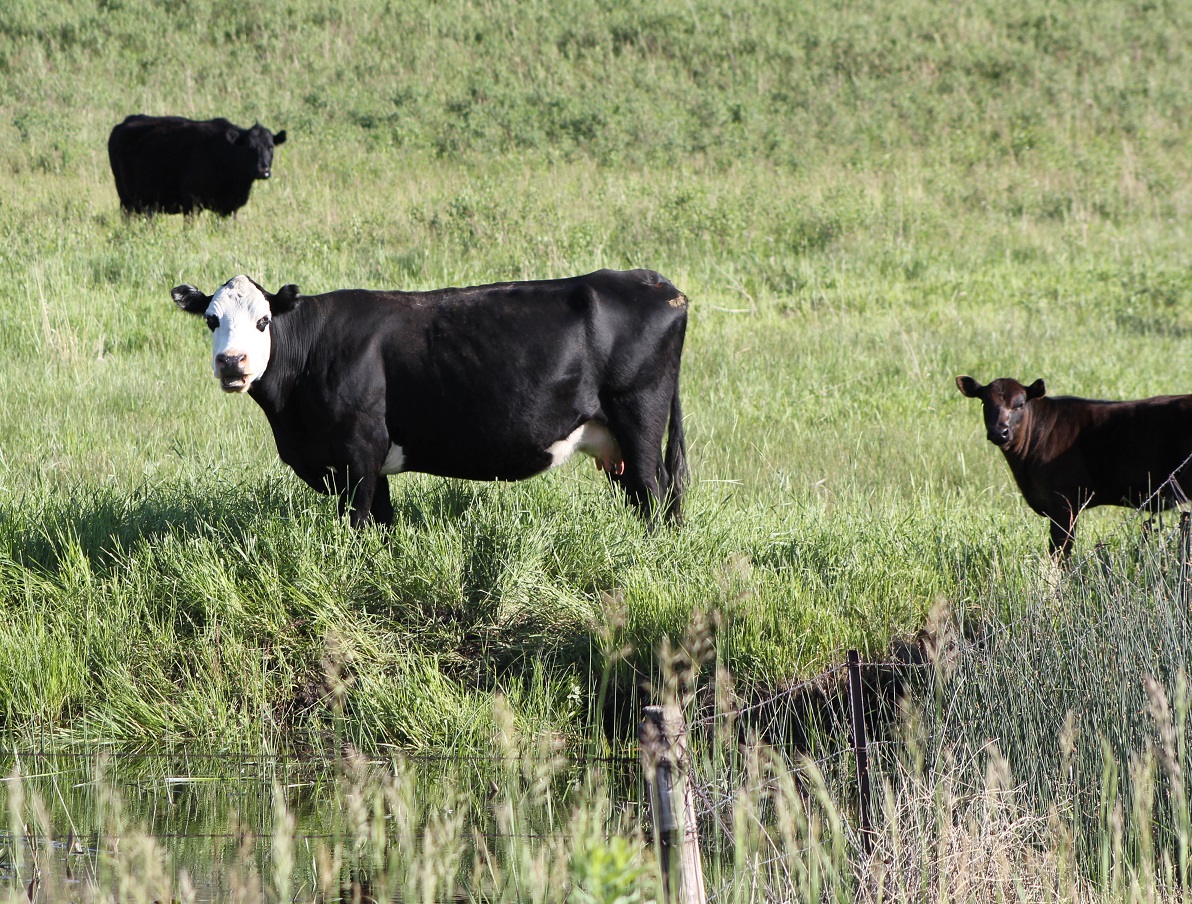
By Jay Jenkins, Nebraska Extension Educator
Fall is one of the most important times to evaluate the condition of your cows. It gives you time to take action to ensure that your cows calve in adequate body condition.
We know that body condition at calving is one of the most important factors that determines a cows ability to rebreed. As Table 1 (http://go.unl.edu/h9ym) and Table 2 (http://go.unl.edu/vv8s) illustrate, thin cows take longer to come into heat after calving than do cows that calve in better condition.
Cows that are cycling before the start of the breeding season are more likely to get bred early and are therefore more profitable. The more cows that you can have cycling before the start of the breeding season, the higher your conception rates will be and the more compact your calving season.
If your cows are to have the best chance of cycling before the start of the breeding season, they should be in a body condition score of 5 or higher when they calve.
One of the best ways to ensure that your cows are in adequate condition at calving is to make sure that they go into the winter in good condition. Increasing your cows’ condition during the winter can be quite expensive. Therefore, it is much more cost effective to fatten thin cows before the onset of winter.
Increasing the body condition of cows in the fall can be accomplished in two ways. You can either increase their nutrient supply by supplementing or moving to better pasture, or decrease their nutrient demands by early weaning.
Early weaning is often the more profitable option. This is especially true when grain prices are relatively low. The calves will gain as well, or better, off of the cow as they would on the cow, and the cows will gain condition more easily.
Weaning can drop the nutrient requirement of the cow by 25%, or more, depending on the milking ability of the cow and the age of the calf. This will help the thin cows regain body condition more cheaply than they could during the winter.
Once winter approaches, however, options become more limited. Some cows may be too thin to attain a body condition score of five before hay feeding starts. Producers can still save money by sorting and feeding cows according to body condition. Thin cows can be fed the additional feed they need without wasting money by overfeeding cows already in good conditions.
The reproductive rate of the cowherd is one of the most important factors affecting cow/calf producers’ profitability. A cow’s reproductive potential is closely related to her body condition at calving. Body Condition Scoring is a tool producers should use to help them get their cows into optimum body condition at calving.
For more in-depth information, see the recently revised NebGuide Body Condition Scoring Beef Cows: A Tool for Managing the Nutrition Program for Beef Herds (http://extensionpublications.unl.edu/assets/pdf/ec281.pdf) It describes the 1 to 9 of body condition scoring, complete with pictures and details for assigning scores.
Nebraska Extension also has Android (http://go.unl.edu/bcsappandroid) and Apple (http://go.unl.edu/bcsappios) versions of a smartphone app to help you learn to assign body condition scores.
Additionally, more information on the role of body condition and body condition scoring are available at http://beef.unl.edu.